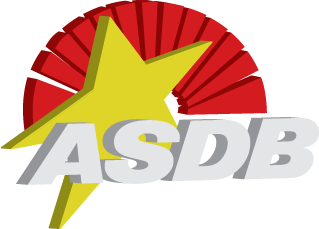Assistive Technology: “any item, piece of equipment, or product system, whether acquired commercially, off the shelf, modified, or customized that is used to increase, maintain, or improve the functional capabilities of children with disabilities.”(Code of Federal Regulations)
ASDB provides students with the technology they need to access the general education curriculum. Students benefit from a variety of tools to enhance coursework and classroom access. Experienced and skilled staff assess individualized student technology needs. Technology can be a combination of both low and high technology devices and software; and contribute to literacy, skill-building and job readiness.
Technology for the Deaf or Hard of Hearing ASD Campus Programs
We strive to create visually-rich learning environments through the use of interactive whiteboards, document cameras, FM systems (personal, portable, or cochlear implant compatible), mobile laptop carts, tablet computers, and educational software that emphasize visual content. We also make extensive use of video technologies to increase reading and writing skills and to enhance the use and teaching of ASL across the curriculum.
ASD Co-op Programs
One of the first considerations for students who are deaf or hard of hearing is the need for assistive listening devices in the classroom setting. There are four basic types of devices that are considered:
- Personal FM System
- Sound Field FM System
- Portable FM System
- FM systems compatible with Cochlear Implants
The first three devices consist of a transmitter worn by the teacher and a speaker for the student either attached to the student’s personal amplification or a speaker situated somewhere in the classroom. For students with a cochlear implant, the teachers voice can also be amplified directly to the cochlear device. Electronic dictionaries and thesauri are also available for students to develop and reinforce vocabulary development. With the advent of the iPhone and iPad and other internet based devices, there is and will continue to be more access to video & captioned information and training.
Augmentative Communication
Augmentative Alternative Communication (AAC) is an important part of the overall communication program at ASDB in order to maximize independence and academic skills for some of our multiply disabled students.
Technology for the Blind or Visually Impaired ASB Campus Programs
All ASB classrooms on the Tucson Campus contain one or more fully accessible computers with screen-reading and screen magnification software, as well as CCTVs and other access technologies. Fully accessible computer labs are also available for instruction. All High School and Middle School students on campus, who have been assessed with a need, receive wireless Braille notetakers or refreshable Braille displays to use for their classes.
Classrooms and labs may also include Braille embossers, Mountbatten Braillers, Pictures-in-a-Flash (P.I.A.F.) machines, electronic book readers, interactive whiteboards, descriptive audio, Braille translation software, talking dictionaries, talking calculators, graphics tablets and scanning software with built-in readers, alternative keyboards and communication boards.
ASB Co-op Programs
There are many “low tech” and “high tech” items that enable access to the curriculum and promote success in the classroom.
“Low tech” solutions that are simple to implement but can have a profound effect on learning include providing:
- large or bolder contrasted print
- felt tip markers
- bold line paper
- reading stands
- lighting
- large button calculators, talking calculators, and talking dictionaries/Thesauri
- Simple handheld monoculars/magnifiers
“High tech” devices are available for a variety of student needs. These include:
- Computer screen reading devices/software (such as Jaws, Kurzweil, Dolphin, Zoomtext, etc.)
- Portable magnifiers, (such as Video Magnification devices /software (Mimeo) for both near and distance viewing , electronic handheld magnifiers)
- Portable Braille displays, Braille notetakers, Braille software (such as Duxbury, Open Book)
- Braille embossers to produce documents in Braille from the above high tech devices
- Digital talking book players, iPhones, iPads
For those students receiving Orientation and Mobility, devices to promote successful travel include:
- Monoculars and global positioning/navigation systems, echo and object location devices as well as traditional mobility canes
